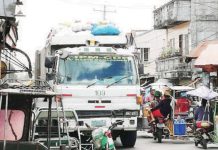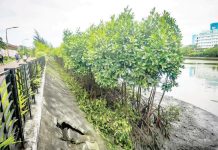
PANAY Island’s 96 municipalities and cities stand at a critical crossroads between climate change and economic growth. Stronger typhoons, rising sea levels, and erratic rainfall are increasingly disrupting daily life across the island. Immediate and collaborative action from all local governments is essential. Tackling these challenges is crucial to ensure public safety and long-term economic resilience.
The island’s natural ecosystems are our primary defense against disasters. Abundant mangroves, upland forests, and coral reefs offer crucial protection. For example, Antique’s forests prevent landslides, while mangroves in Aklan, Capiz, and Iloilo naturally buffer storm surges. Additionally, coral reefs around Boracay and Isla Gigante serve as underwater barriers, safeguarding shores from flooding by breaking powerful waves.
Effective transboundary water management is crucial, requiring local governments to collaborate and promote a “ridge-to-reef” approach in local governance. This ensures fair water access, prevents conflicts, and reduces flood risks from mountains to coasts. Recognizing the interconnectedness of our green (upland forests) and blue (marine) ecosystems is vital, as the impacts are not just individual local government area but also neighbors and downstream.
Key biodiversity hotspots deserve conservation priority. For example, the Tigum-Aganan Watershed is critical for water supply, flood control, and siltation in Iloilo’s lower grounds. Northwest Panay Peninsula Natural Park, specifically the Nabaoy Watershed, supplies Boracay’s potable water, while Sibalom Natural Park provides water and irrigation for several Antique coastal municipalities.
Panay Island’s rich biodiversity is crucial for climate change adaptation and sustainable growth. The Central Panay Mountain Range acts as a vital carbon sink, regulating climate by absorbing greenhouse gases. Healthy ecosystems provide essential clean air, water, food, plants, animals, microbes, medicines, natural hazard protection, and cultural benefits, while also supporting local livelihoods. Protecting our habitats, wetlands, watersheds, local protected areas, and marine sanctuaries will reduce disaster risks and secure the future of our agriculture and fisheries.
Our municipalities and cities can enhance their resilience through smart growth strategies. Agriculture should integrate nature-based solution and adopt sustainable land management, promoting climate-smart practices like agroforestry to boost food production and absorb carbon.
Coastal communities can strengthen their economies via sustainable fishing, aquaculture, and ecotourism, alongside implementing coastal management plans. Cities should embrace “green-grey infrastructure” — combining natural solutions with engineered systems—to improve drainage and waterways, preventing floods. Investing in early warning systems is also vital.
Local governments must attract investors for clean, energy-efficient, and climate-resilient industries and services including low-carbon public transport. By integrating scientific data with local knowledge, we can prioritize safety and ensure development benefits everyone, not just urban centers.
For Panay’s long-term growth, all local governments must collaborate within the Regional Development Council to build strong, resilient economies. This means integrating climate resilience and biodiversity conservation into all economic planning. Our Comprehensive Land Use Plan and Local Climate Change Action Plan need regular review, improvement, and action, serving as the foundation for local growth. Utilizing scientific data, conducting disaster risk assessments, and restoring mangroves are crucial for avoiding extreme natural disasters like floods and storm surges.
Strategic planning will minimize future risks and foster organized, sustainable economic expansion.
Securing Panay’s future requires a holistic, collaborative approach. This means strong leadership from local governments, active community participation, and responsible practices from businesses, private sectors, civil society, and academic institutions. Support from national government agencies and international donors are also essential. Local governments must collaborate not just in disaster response, but in preparing for a brighter future.
Panay Island can become a model of resilience. Here, environmental protection and economic prosperity will thrive together, ensuring a safer and more prosperous tomorrow for all.
***
The author is an advisor of nature-based solution and ridge to reef strategy./PN






